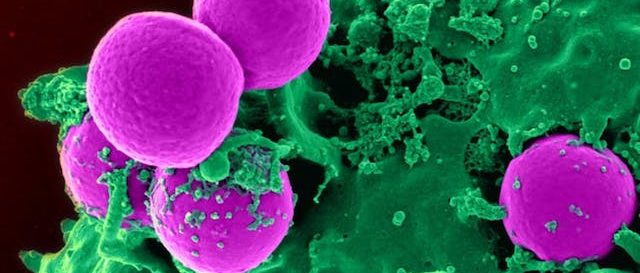What Is Cancer and How To Your Healthy Cells From Becoming Cancerous Cells

What Is Cancer?
In order to help yourself, or those around you affected by cancer, you first need to understand what cancer is. This in itself is one of the biggest challenges as cancer is such a complex and multifaceted disease.
In short, cancer is the result of DNA mutation, which results in a genetic disease. Mistakes and issues in our DNA, of which we cannot control, can result in uncontrolled cell growth.
Normal cells regulate life, death and everything in between
When cancer is present, normal cell control no longer works, which means dangerous cancerous cells can grow unchecked and ultimately spread to other parts of the body.
It is part of our human nature to try and protect ourselves, it is only natural for us to avoid pain and seek pleasure. Sadly, cancerous cell division is out of our control.
Similar to humans, cancer also follows the survival process. The growing disease seeks immortality by avoiding the body’s checks and balances – the irony is that cancer’s success is really a failure as unchecked growth ultimately leads to its own death.
Genes, pathways and DNA
To understand what cancer is, you first have to understand what cells are, how genes work and what epigenetics is. Once you have this understanding, it is easier to form a process of how cancer starts, grows and spreads around the body
The different bodily processes that influence this are called pathways, also known as the hallmarks of cancer.
When you get your head round these cancer pathways you will better understand how certain cancer treatments work, drugs in particular tend to target / interrupt one or more of these pathways.
The basics behind these pathways are also really important when understanding the potential impact of other interventions, such as diet, exercise and stress management
We say “potential” because in many situations it is not fully understood how a drug or lifestyle intervention works. Our knowledge of cancer is limited and the precise mechanisms of action are very complex and often unknown.
To find out more about cancer pathways, check out our easy to understand video course which explains a Six Pathways Model of Cancer designed to help you better understand the disease.
How does a normal cell become a cancerous cell?
There are trillions of cells within the body, but it only takes one to go wrong to mess everything up.
This process doesn’t happen overnight, cancerous cells develop slowly over a long period of time. The process of diverging from their normal state to the cancerous state can take between 2 and 40 years, causing numerous problems along the way. At each stage of the process the cancerous cells follow a similar process, some quicker than others.
Firstly, certain changes occur in the DNA before the cell even becomes cancerous, then additional DNA damage occurs that knocks out the body’s defenses against this growth – cells no longer obey signals to stop growing or commit suicide.
Further DNA damage then allows cells to access the body’s blood supply, meaning the growing cancer mass can nourish itself with nutrients and survive. Further genetic defects allow the cells to move from the original cancer site to other parts of the body – this process of movement is known as cancer metastases.
Over 90% of cancer deaths result from metastases, and it is this ability to move around the body that distinguishes malignant from benign tumors.
Ultimately, it is thought that all cancer starts from a single cell that has, over time, experienced a combination of DNA changes that allow it to grow unchecked and avoid the body’s inbuilt safety mechanisms.
Can you inherit cancer?
You can inherit DNA mutations and errors, which is thought to make it more likely to develop cancer.
For example, inheriting some mutations in the BRCA genes can increase the risk of developing breast and ovarian cancer. Many of the inherited cancers are linked to errors in the DNA repair genes, so the cells are less able to maintain DNA integrity. In some people, the risk is related to specific tissues or organs.
However this is not the only way for cells to go wrong. For many individuals, cancers are caused by a combination of some inherited DNA errors and acquired DNA damage.
To add even more complexity to the disease, DNA damage isn’t the only way cells can mutate. Issues can arise within the structures and processes that control the DNA, so- called epigenetic components, can also be changed by carcinogens and by other factors. We discuss these topics in more detail in our personalised video series.
The process of cancer
After a cell has transformed to a cancer cell, there are many steps along the way that continue to influence the development of cancer as a disease.
The immune system can detect some cancer and destroy them before they are established, other cancers may never be noticed.
It is thought that early stage and low grade cancers have fewer DNA mutations, compared to more advanced aggressive cancers. Which tend to have more errors. Why? These differences may be due to the tissue where the cancer starts, the genetic changes that led to the cancer starting, and the environment in the body.
What else affects cancer?
Hormones may drive some cancers. The female hormone estrogen has a function of stimulating normal breast cell replication, but can also cause breast cancer cells to grow. The high rate of cell division in breast tissue makes it more susceptible to mistakes in the DNA replication process so that abnormal cells are more likely to arise, and estrogen can target specific cell receptors that drive the growth of the cancer.
Diet, exercise, lifestyle and cancer
There are many studies and research papers that highlight the link between exercise, endorphin release, and positive mood. The process is no different when it comes to helping yourself with cancer.
Eating well can help your body at all stages of the cancer journey from diagnosis, through treatment and recovery. Following a balanced diet can also influence those around you to lead a healthier lifestyle, meaning the impact can go beyond those living with cancer.
Much research considers food to be a key element in your armory against cancer following diagnosis, whatever your stage. This is not to replace treatment, but to support alongside medical advice to get the most out of your treatment and to boost your resilience.
There’s no single study proving it will help, and there’s no single food that’s a miracle, but there is enough evidence to suggest that some food choices can be of real benefit. This is not just in how patients feel, but also maximizing your health while living with disease, preventing recurrence, or living well in a palliative situation.
Help yourself and those around you
After a cancer diagnosis, overall diet quality and choosing particular foods can be very helpful for supporting health and resilience. These choices can also contribute to other aspects of your health and wellbeing.
After a cancer diagnosis, dietary needs can change, especially at different stages of cancer and particularly at different stages of treatment. Studies have identified foods that can help prevent cancer, and foods that may increase cancer risks.
For people living with and beyond cancer, a better quality diet is associated with longer survival according to studies. Some foods with particular anti-cancer properties have been identified.
Overall, a higher intake of plant foods is beneficial, providing an array of vitamins and minerals, and particularly phytonutrients, botanical compounds in certain foods are especially valuable as they have anti-cancer properties.
Reducing or avoiding red and processed meat is advisable as there are compounds in these foods that may trigger cancers to start. Very recent research suggests that eating plenty of fibre helps to support a healthy population of microbes in the digestive system, and this can have a benefit for immunity.
Healthy unprocessed fats such as olive oil, and oily fish provide essential fats that help healing and may help reduce inflammation. Individual needs may differ, and dietary changes need to be considered for each person’s situation and taking account of other restrictions they may need to follow.
Research Sources:
Pepper et al, Cancer Research Meets Evolutionary Biology, Evol Appl. 2009 Feb; 2(1): 62–70
Coller, Is Cancer A Metabolic Disease? Am J Pathol. 2014 Jan;184(1):4-17
Tomasetti, Vogelstein, Variation in cancer risk among tissues can be explained by the number of stem cell divisions, Science 02 Jan 2015: Vol. 347, Issue 6217, pp. 78-81
cancer development
Tortorella SM, Royce SG, Licciardi PV, Karagiannis TC. Dietary Sulforaphane in Cancer Chemoprevention: The Role of Epigenetic Regulation and HDAC Inhibition. Antioxid Redox Signal. 2015;22(16):1382-424
Routray W, Orsat V (2011) Blueberries and their anthocyanins: factors affecting biosynthesis and properties. Compr Rev Food Sci Food Saf 2011; 10(6):303–320
Calado A, Neves PM, Santos T, Ravasco P. The Effect of Flaxseed in Breast Cancer: A Literature Review. Front Nutr. 2018;5:4. Published 2018 Feb 7. doi:10.3389/fnut.2018.00004



